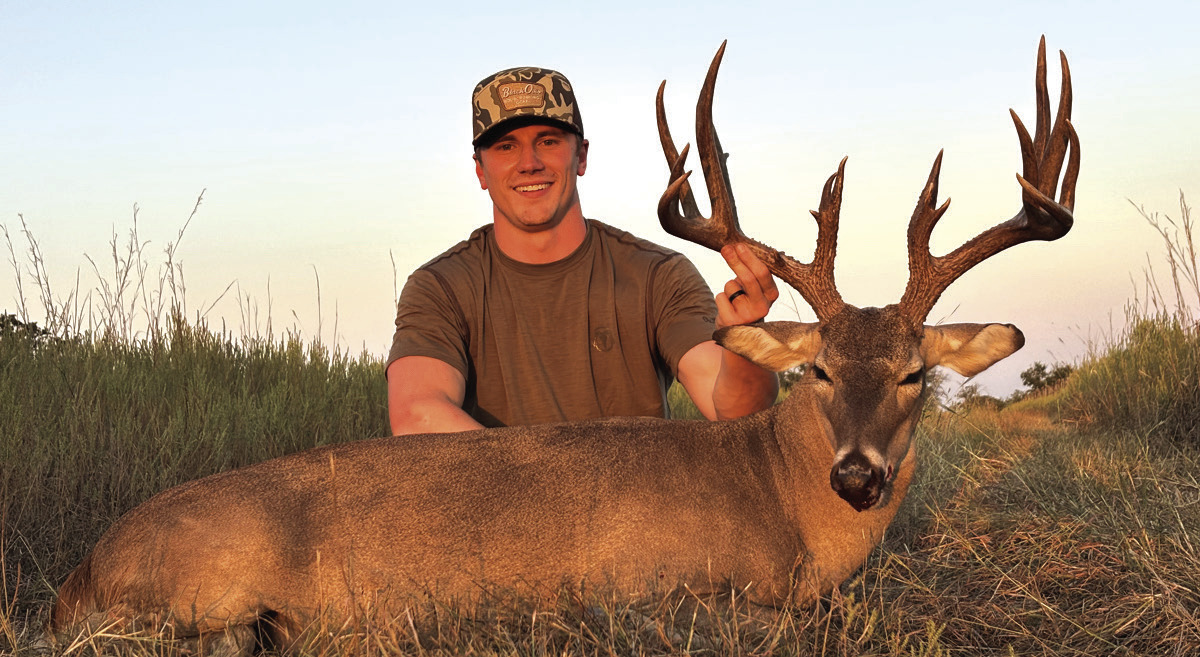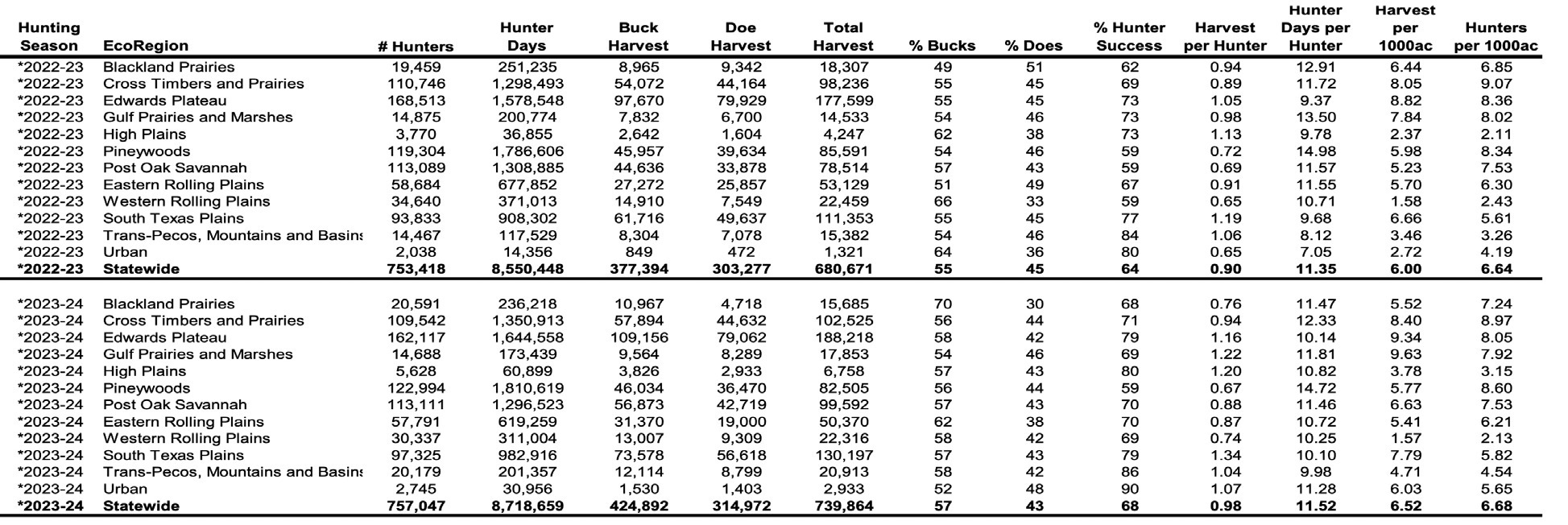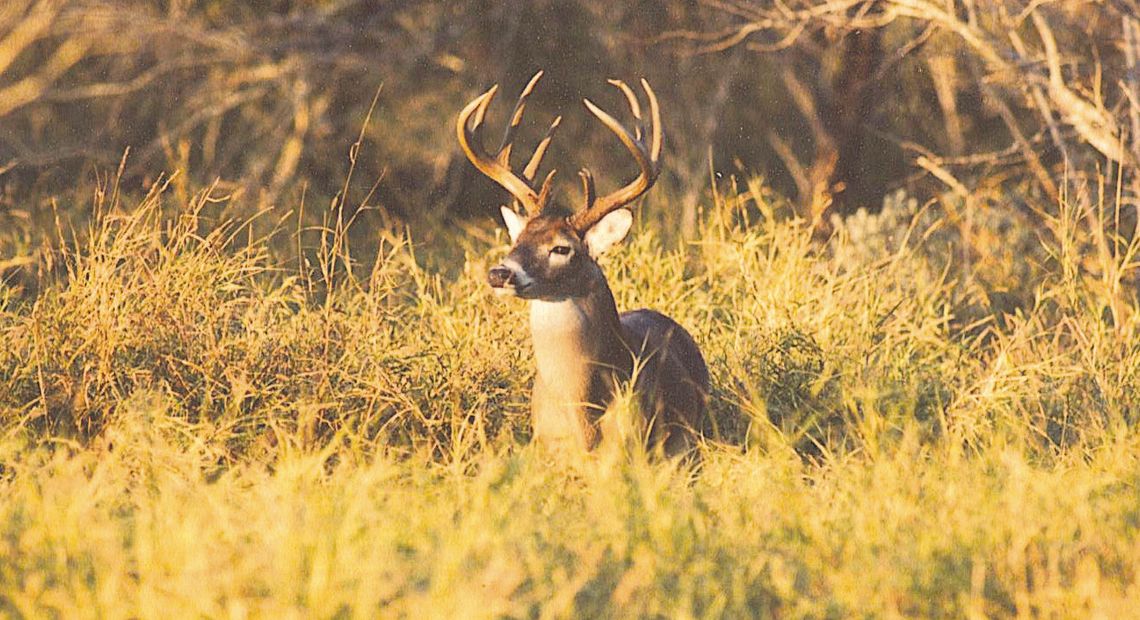2024-25 season underway, more than 700,000 Texas hunters expected to head to the field this season
It’s showtime for Texas deer hunters. The 202425 general hunting season for white-tailed deer opened statewide at 30 minutes before sunrise on Nov. 2.
Most whitetail junkies will agree: There is nothing like witnessing the dawn of a new day from the peaceful confines of a cozy hunting blind situated in good deer woods. For many, it makes no difference if a deer shows up or not. Just being out there with a front row seat in nature’s chapel is what deer hunting is all about.
Experts are saying it should be a banner year in most areas, with plenty of mature bucks in the field.
Antler quality is expected to be average to above average across most of the state, thanks to bountiful rainfall last spring and early summer. The exceptions are southwest Texas and portions of the Edwards Plateau. Antler quality there is expected to be average to slightly below average in localized areas that didn’t see the timely moisture early in the year, according to Blaise Korzekwa, whitetailed deer program leader with the Texas Parks and Wildlife Department.
Don’t sweat it if work or other obligations spoiled the chances of getting in the field over opening weekend. There is plenty of time to fill those tags. The general season runs through January 5 in most of the state; January 19 in the South Zone.
Texas: A Whitetail Mecca
The stellar outlook comes as no surprise. Just about every deer season is a good one for Texas’ 757,000 whitetail hunters. It’s hard to imagine things turning out any other way.
Texas is huge state with a robust white-tailed deer herd currently estimated at around 4.7 million animals. That’s down from the 2021 estimate of 5.4 million, but still nearly 3-4 times the deer populations found in other leading states like Michigan, Alabama, Mississippi and Wisconsin.
Much of the decline is attributed to 2022 drought conditions in the Edwards Plateau ecoregion, which historically maintains about 1/3 of the state’s deer population. Korzekwa says poor habitat conditions across much of that region over the last few years has resulted in a population decline of about 25 percent.
Despite the drop, the Edward Plateau still maintains a herd of about 1.5 million whitetails. That’s equal to the total deer population estimates in Wisconsin and Mississippi. The biologist also pointed out that deer populations in most other regions across Texas have held steady or seen slight increases since 2019.
Not surprisingly, Texas hunters bring home a bounty of venison each season. The numbers tell the tale of the tape.
Texas deer hunters shot nearly 740,000 whitetails last season, according to TPWD’s annual Big Game Harvest Survey,. Among them were about 425,000 bucks (57 percent) and about 315,000 does (43 percent).
The Edwards Plateau had the most hunters (162,000) and accounted for more harvest (188,000 deer) than any other ecoregion. South Texas ranked second in total harvest (130,000), followed by the Cross Timbers and Prairies (103,500); Post Oak Savannah (99,500); Pineywoods (82,500); and the Rolling Plains, about 73,000.
Korzekwa says the total harvest last season was up about nine percent from 2022, largely due to improved habitat conditions and antler quality. Statewide, hunters enjoyed a success rate of 68 percent last year — the highest recorded in at least two decades.
“Even a down year for Texas hunters is still an exceptional year when you look at deer hunting success nationwide,” he said. “The sheer number of deer and the way our hunters manage them are key factors in the numbers and quality of the bucks Texas is known for.”
Dry and Crunchy
This October was among the driest on record nationwide, and much of the Texas landscape was still brown and crunchy just ahead of the season opener. As of Nov. 1,186 of the state’s 254 counties were under burn bans.
Some hunters may be wondering if the late summer/ early fall dry snap might have a negative impact on hunting success, or the quality of bucks they might see in the field this season.
Korzekwa doesn’t think so. In fact, the biologist says the dry landscape could improve hunting success, especially for those who like to set up in close proximity to corn feeders.
“A drought this time of year typically doesn’t have as large of an impact on the population,” he said. “One thing the does occur is the deer tend to concentrate a more around corn feeders and any successful food plots. We tend to see higher hunter success when we have drought conditions, mainly because the deer are prone to come to corn feeders much better than when things are lush and green.”
Although it packs very little nutritional value, corn is a great source of fuel for carrying the animals through winter. Fed at regular intervals, on a consistent basis, corn can become somewhat addictive.
Supplemental food plots also can boost the odds of luring deer into the open for evaluation, especially late in the season after natural food supplies have been exhausted. Food plots also provide great sources of nutrition to carry animals through stressful winters, when other food supplies are scarce.
The bad news is food plots need water to germinate the seeds. With limited rainfall around the state through early fall, many planting efforts were a bust this year without irrigation to spur the green-up. Korzekwa says acorn production is another component hunters should take into consideration when planning hunting strategies. The nutritious nuts are a heavily preferred food source. I’ve seen deer walk right past corn piles en route to white oak flats.
Acorn abundance can vary from one year to the next. Bumper crop years can make hunting around corn feeders and food plots painfully slow. Just the opposite can happen when acorns are scarce.
“If someone has a lot of oaks, there is good chance they will notice activity around feeders begin to slack off once the acorns start to drop,” Korzekwa said. “They’ll still come to feeders, but not near as much.”
As antler quality goes, Korzekwa says the recent dry spell won’t have any noticeable impacts because it happened after bucks had fully developed their antlers. Numerous low fence bucks tagged by October archery and Managed Lands Deer permit holders are solid evidence of the antler quality on some mature animals this season.
Several have been entered on the Texas Buck Registry website, texasbuckregistry. com. Among the best is a Lampasas County 17 pointer shot by Ty Hinds. Hinds’ buck scores 182 7/8, according to the TBR website. Another is a Shackelford County 14 pointer killed by lady hunter Katie Despino. Despino’s buck scores 168 6/8 B&C.
While antler quality certainly won’t be lacking this season, Korzekwa says dry conditions could take a toll on the body condition of bucks later on.
“If the drought continues to hang on, we could run into some scenarios where bucks may be in worse shape than usual during the post rut,” Korzekwa said. “Bucks naturally lose weight during the rut because they are out chasing does. Without rain, there won’t be any moisture in the ground to promote the growth of winter forbs. That could definitely have a negative impact their body condition once the rut winds down and make them slower to recover.”
Deer Season At A Glance North Zone: Nov. 2 - Jan. 5 South Zone: Nov. 2 - Jan. 19
Special Late Season North Zone: Jan. 6-19, 2025 South Zone: Jan. 20 - Feb. 2 Youth-Only
North Zone: Oct. 25-27 and Jan. 6-19 South Zone: Oct. 25-27 and Jan. 6-19 Archery Only: Sept. 28 Nov. 1 Muzzleloader: 90 Counties, Jan. 6-19
Hunter Reminders
• Carcass Disposal: Hunters are reminded carcass disposal regulations implemented last spring. The regulations are meant to help reduce the risk of unintentional transmission of Chronic Wasting Disease (CWD) to susceptible wildlife from CWD-positive areas to areas where the disease is not yet known to exist.
TPWD says it is best to leave unused carcass parts at the property of harvest. Hunters are allowed to debone a carcass at the property of harvest provided: — Meat is processed no further than whole muscles and may not be ground, chopped, or sliced.
— Meat from multiple deer must remain in separate bags or containers while transported.
— Proof of sex and tagging requirements remain with the meat until reaching a final destination.
If the carcass is transported away from the property of harvest, unused parts must be disposed of in a commercial trash service, returned to the property of harvest or buried at least three feet deep.
Harvested deer or deer heads may be taken to a commercial processor or taxidermist. The processor or taxidermist must properly dispose of unused parts.
* Increased Doe Days: Deer hunters in 43 counties in eastern Texas (Post Oak Savannah and Pineywoods ecoregions) are now allowed to take antlerless deer during the first 23 days of the season, up from 16 days.
* Hunter Education Certficate/License: Always keep proof of a valid hunting license and hunter education certificate with you in the field, just in case you are checked by a game warden. In Texas, every hunter born on or after Sept. 1, 1971, is required to pass a state-approved hunter ed course.
* White-Tailed Deer Antler Restrictions: Applies in 117 counties. The restrictions limit hunters to two bucks, only one of which may have an inside spread of 13 inches or more. The second legal buck must have at least one unbranched antler. Reference the 2024-25 Texas Outdoor Annual to check laws and bag limits for your county.
* Mule Deer Antler Restrictions: Applies in Andrews, Armstrong, Bailey, Briscoe, Castro, Childress, Cochran, Collingsworth, Cottle, Dawson, Donley, Floyd, Foard, Gaines, Hale, Hall, Hardeman, Hockley, Lamb, Lynn. Lubbock, Martin, Motley, Parmer, Randall, Swisher, Terry, Terrell, and Yoakum counties.
A legal buck deer is defined as a buck with an outside antler spread of the main beams of 20 inches or greater. Aany buck with at least one unbranched antler (e.g., spike) is not legal to harvest, unless the outside spread of the main beams is at least 20 inches.









